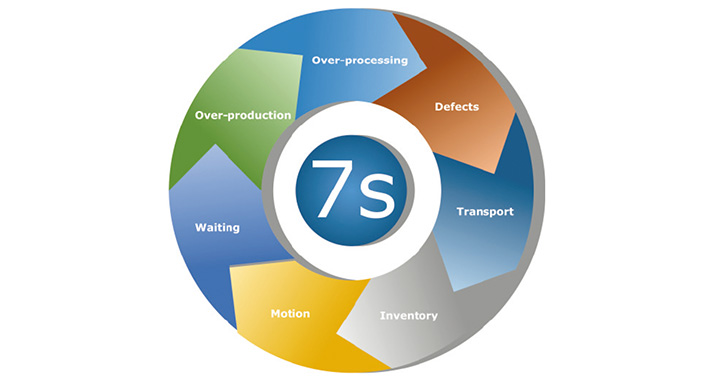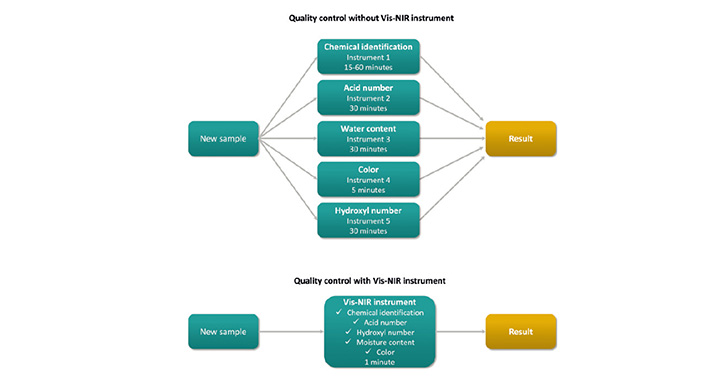Chemical plant operators can reduce costs and minimize the impact on the environment using NIR and RAMAN.
Lean manufacturing of polyurethane, assisted by near-infrared (NIR) and Raman spectroscopy
Chemical manufacturing such as polyurethane production is characterized by a cost intensive production process combined with a negative ecological impact. These adverse effects can be significantly improved by using vibrational spectroscopy (NIRS & Raman). This analytical technique can assist the operator of the plant to reduce costs and minimize the impact on the environment.
General aspects in quality control of incoming raw materials, intermediates, and final products in the polyurethane industry
Traditional QC labs operate multiple instruments.
Analysis of five parameters requires five instruments with five operating procedures. Some of these quality control procedures require sample preparation and chemicals and the analysis takes up to one hour. Furthermore, the lab technician needs to be trained to use these instruments.
Quality control of polyurethane raw materials with and without Vis-NIR.
On the other hand, the lab manager can avoid this complexity using an NIR analyzer.
One NIR analyzer can determine multiple quality parameters in a single operating procedure without any sample preparation or chemical waste within a minute. An operator can be trained to use the system within five minutes. This simplifies significantly quality control and reduces dramatically the costs of the daily quality control. A brief description of parameters, which can be determined in quality control using NIR spectroscopy in the polymer industry in general as well as in PU more specifically are summarized in Metrohm Application Bulletin AB-414
Spectroscopy as a tool for lean manufacturing
Lean manufacturing is a systematic approach to reduce waste during production without sacrificing productivity. This approach stems originally from Japanese automotive industry. Combined with a Kaizen, a philosophy of continuous and never-ending improvement, this approach is quite often utilized as a management tool in a modern customer-orientated enterprise.
The Japanese word «muda» is used for the waste related to the production process. It means «futility, uselessness, or waste- fulness». Waste are various processes, activities, and features, which do not add value to the final product. For examples, a fifth wheel on a car is muda. Continuous analysis of the performance of the production combined with the identification and reduction of muda gives the operator the possibility to improve the quality of the products and to reduce the costs of the manufacturing process.
Muda 7s model

Muda can be classified using a 7s model, which describes seven types of waste. These types of waste are:
- Transportation. For example, each movement of material from one location to another, which does not add value to a product, requires resources and can cause damage.
- Inventory. Stored components require space, packaging, and need to be transported. This increases costs compared to just-in-time manufacturing.
- Motion. For example, movement of machines or excessive travel between workstations does not add value to the product.
- Waiting. This is the waste of time, e.g., through waiting for components, response from another department, etc.
- Over-production. Excess needs to be stored, requiring again space and therefore also money.
- Over-processing. For example, additional work, which is not needed in the present step.
- And finally defects: quality issues, which require reprocessing or even disposal of the produced material.
Application possibilities of NIR and Raman spectroscopy in the production of polyurethane raw materials
The Metrohm White Paper “Lean manufacturing of polyurethane, assisted by near-infrared (NIR) and Raman spectroscopy” provides an overview about application possibilities of NIR and Raman spectroscopy in the production of polyurethane raw materials. It demonstrates that both techniques can assist the operator with the implementation of lean management principles while reducing costs and improving quality of the products. Contact us directly to assist you with the implementation of these techniques in your specific production process as well as method development.
Refer to the White Paper below for more details.










